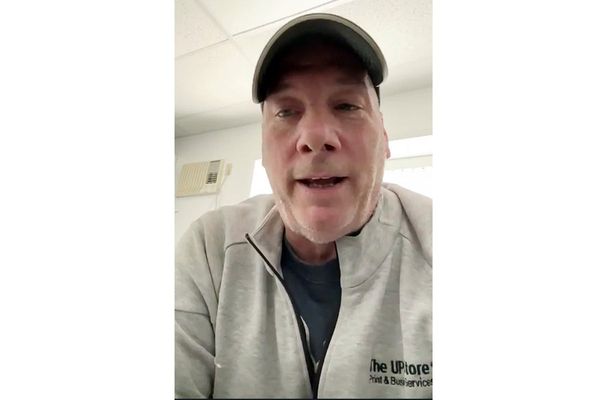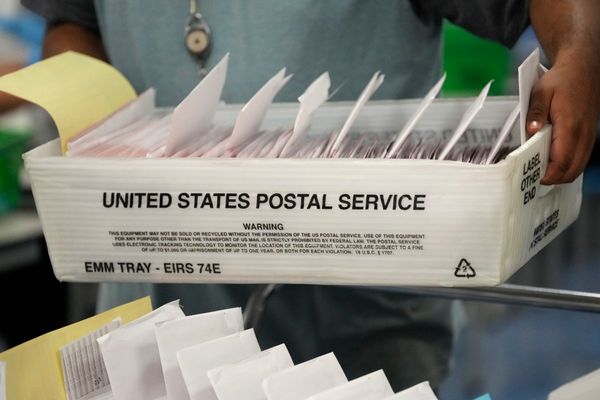
For those living in small spaces, artificial grass has its upsides. It’s uniformly green, year round, without the need for watering, mowing or any other upkeep.
The allure of evergreen sporting fields has also seen synthetic turf become an increasingly popular surface, driven by constraints on open space while population density increases.
In New South Wales, the number of suburban sporting fields made from artificial turf has increased sixfold in the last five years, jumping from 30 in 2018 to 181, according to a report released by the state’s chief scientist in June.
But concerns about microplastics, urban heat and the chemical compounds in synthetic grass have become points of contention for environment and community groups, who are calling for the surface to be banned.
Taking root
A US invention, the first artificial grass was installed in a school recreation area in Rhode Island in 1964. The surface typically has several components, including polypropylene fibres that mimic the blades of natural turf, and an “infill” layer for shock absorption, which is most commonly made of crumb rubber from used tyres.
Prof Hugh Durrant-Whyte, the NSW chief scientist, concluded in his June report that “both rubber infill and turf fibre blades from synthetic turf fields are found in waterways in NSW” and that the “amount of turf fibres lost from a synthetic turf field is likely to be in the hundreds of kilograms per year”. The report recommended more research into its impacts and that measures be taken to mitigate environmental risks. But he stopped short of suggesting it should be banned.
Last week, the directors of the Total Environment Centre and its Australian Microplastic Assessment Project (Ausmap) wrote to the NSW environment minister, Penny Sharpe, calling for a five-year moratorium on new planning and approvals for synthetic grass fields, and to subject existing fields to “pollution mitigation measures as soon as possible”.
Dr Michelle Blewitt, an Ausmap director, says early results from recent stormwater sampling, which tested microplastic loss from a north-west Sydney turf field, showed that up to 70,000 particles of rubber crumb and more than 50,000 particles of synthetic grass were captured in a single trap sample.
“In most of these fields … there’s no traps or any devices to contain the loss of these grass pieces going into the environment. We’re finding them very regularly in our samples across the country,” Blewitt says.
Crumb rubber is of particular environmental concern because the material degrades when exposed to the sun and contains “thousands of other chemicals that are included into tyres during their manufacture,” says Dr Shima Ziajahromi, of Griffith University’s Australian Rivers Institute.
These include heavy metals and toxic compounds such as polycyclic aromatic hydrocarbons and 6PPD. “During rain events, [particles] are washed off and they get into environments where they can make aquatic ecosystems sick,” she says.
A typical synthetic soccer field, according to one estimate, requires at least 100 tonnes of crumb rubber – about 22,000 tyres’ worth.
The European Union is moving towards a ban on synthetic turf made from crumb rubber, while in the US, California is joining several other states in introducing legislation to ban fake grass that contains per- and polyfluoroalkyl substances, known as “forever chemicals”.
In recent years, synthetic turf manufacturers have begun to move away from crumb rubber, instead using organic infill material, such as cork and engineered wood chips. Even so, the amount of plastic such fields require is concerning, says Garnet Brownbill, spokesperson for the Natural Turf Alliance.
“We’re looking at anywhere between 250 and 500 [tonnes] of plastic in one field alone. The reality is most of that currently cannot be recycled within Australia,” Brownbill says.
Heated debate
Unlike natural turf, which stays cool in the sun, artificial grass heats up quickly because it absorbs more incoming solar radiation.
“It’s a material that, like polished metal slides, can cause severe burn injuries,” says Sebastian Pfautsch, an associate professor of urban management and planning at Western Sydney University. His research has shown that synthetic turf in playgrounds can heat up to temperatures greater than 80C, even when the ambient temperature is less than 30C.
In 2020, a Perth childcare centre was fined $15,000 after three toddlers sustained second-degree burns from walking on synthetic turf in bare feet.
Synthetic grass stays cooler if shaded, Pfautsch says, adding there are now newer materials on the market that can remain at cooler temperatures if the surface is watered – but that this negates the water conservation advantage that synthetic grass has over natural turf.
Fake grass does have its advantages, including the ability to withstand a high usage intensity, typically estimated to be about 60 hours a week.
“The science around natural turf fields have significantly increased in the past decade, which has resulted in many fields being upgraded to cope with 30 hours a week, through better drainage, irrigation and soil science,” says Martin Sheppard, chair of the playing surfaces expert circle of the International Association for Sports and Leisure Facilities.
“There are a lot of environmental groups who are very keen to stay away from synthetic technology and have all natural fields, and in an ideal world most football codes would like that.”
But with increasing community demand and more extreme weather, he believes limited use of synthetic fields should be considered. “From all the research we’ve done on the number of fields that are out there and fields that are planned, I wouldn’t expect in the next 10 years to have more than 2% of sports fields around Australia to be synthetic.”
An advantage of synthetic fields, according to Sheppard, is “a consistency of play across the whole year. It doesn’t get worn out during the year as it does with heavy usage, with poor weather.”
This is the “all weather pitch” at my son’s football club at Mitchelton. Cost $1.5m three years ago. Pic from club’s Facebook page. pic.twitter.com/n6h00qvfd3
— Graham Readfearn (@readfearn) February 28, 2022
Local councils face the difficult need to balance environmental considerations with an obligation to provide spaces for public recreation. “If … they haven’t got the land, we know that synthetics can cope with far more than what natural turf can, meaning that passive parks would then be saved from conversion to active and sports playing fields.”
Sheppard says synthetic fields, if installed, should include good design measures such as plentiful surrounding shade, and being made to comply with an Australian standard on minimising the amount of infill that disperses into the environment.
Financially, the cost of installing, maintaining and replacing a good quality natural field over 30 years is comparable to that of an artificial field, Victorian government modelling suggests.
“We find it ridiculous that the government is still placing funds of money on a plastic surface material that clearly pollutes, as indicated by the [NSW] chief scientist’s report,” Brownbill says. “Synthetic turf should be the last resort, not the first choice.”







